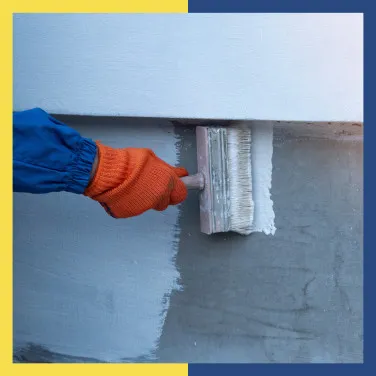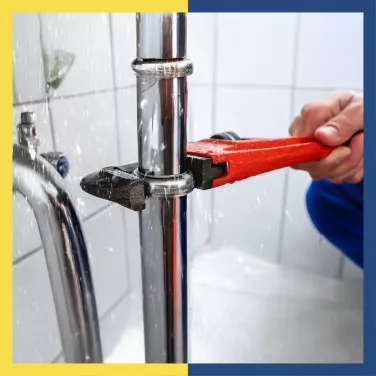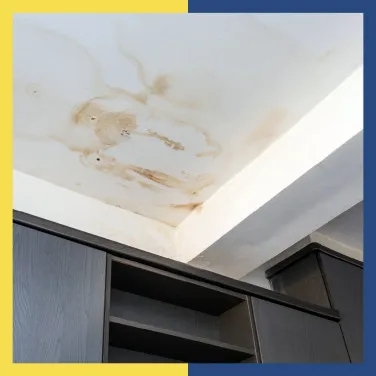Water leakage solution 101: Must-know things for a dry home
Are you fed up with managing water seepage and leaks? Understand the root causes of leakage and discover efficient water leakage solutions and their benefits to keep your home dry and healthy.
Table of Contents
Dampness and water leakage are among the most common yet underestimated issues in households. These problems cause surface deterioration, unsightly stains, mould growth, and health hazards. The good news is that reliable waterproofing solutions and techniques, such as damp proofing, can effectively protect your home from these risks.
Imagine dealing with persistent damp walls during the monsoon or water dripping from your ceiling—it’s frustrating, isn’t it? These issues often result from inadequate waterproofing solutions or poor construction practices. Proactive methods like damp proofing help to prevent moisture from invading your home, ensuring a comfortable and healthy living space.
Water leakage solution 101: Must-know things for a dry home
Addressing water leakage requires understanding its root causes and proactively preventing damage. This section explores the common leakage triggers, helping you identify issues early and protect your home from lasting damage.
Here are some key causes of water leakage –
- Ageing infrastructure
Over time, wear and tear in walls, ceilings, and joints can create pathways for moisture. This is especially common in older homes where materials degrade.
- Inadequate roof waterproofing
A lack of proper roof waterproofing exposes the structure to water infiltration, especially during heavy rains. Damaged tiles, clogged drainage, or improper sealing exacerbate this problem.
- Basement and foundation issues
Poor drainage around the home can cause water to enter basements through cracks in the walls or floor. Over time, this can lead to dampness and damage. Proper drainage and waterproofing during construction are essential to prevent such issues.
- Improper ventilation and drainage
Poor air circulation contributes to condensation, worsening damp conditions in enclosed spaces. Blocked or inefficient drainage systems redirect water toward vulnerable areas.
Understanding the causes of water leakage and dampness is only half the battle. Once you identify the vulnerabilities, implementing preventive measures and corrective actions becomes essential to keep your home dry and well-protected.
Here are some best practices to address dampness and prevent future leakage –
- Conduct annual inspections to identify early signs of cracks or seepage
- Prioritise installing robust waterproofing solutions during construction or renovations
- Regularly clear drainage systems to avoid water accumulation
- Use advanced damp proofing techniques for long-term protection against moisture
These precautions ensure your home stays dry, durable, and free from moisture-related issues. Recognising and acting on early warning signs is your best defence against costly repairs and structural damage.
Comparing water leakage solutions: Temporary vs. permanent repairs
When it comes to tackling water leakage, homeowners often face a choice between quick fixes and long-term solutions. While temporary repairs might seem appealing due to their affordability and speed, permanent methods offer lasting protection and peace of mind. Understanding the differences can help you make an informed decision.
1. Temporary repairs - A quick fix
Temporary repairs are short-term solutions to address minor leaks or emergencies. While they provide immediate relief, they do not resolve the underlying causes of dampness or leakage.
- Sealants and patches – Sealants, such as silicone or acrylic-based products, crack sealers, and waterproof tapes can block leaks in walls or ceilings. They are simple to apply and can quickly stop water ingress. However, these fixes are often not durable and may require frequent reapplication, especially in areas with heavy rainfall.
- Surface coatings – Water-repellent paints or sprays provide a protective layer on walls, reducing the impact of moisture. While they temporarily mitigate dampness, these coatings degrade over time, especially if the source of the water leakage isn’t addressed.
- Plastic covers and barriers – Plastic sheets or tarpaulins can be used to shield roofs or exterior walls during heavy rains. They offer immediate protection against water exposure but are not a sustainable solution and can be easily damaged by strong winds or harsh weather.
2. Permanent repairs: Long-term protection
Permanent solutions tackle the root causes of dampness and water leakage, ensuring long-lasting results and reducing the likelihood of recurring issues.
- Damp proofing techniques – Damp proofing involves applying barriers to walls, floors, or foundations to prevent moisture penetration from the ground. This method is especially effective in areas prone to consistent dampness, such as basements. It provides a robust, long-term defence against water damage.
- Roof waterproofing systems – These systems use advanced materials to protect roofs from water infiltration. Professionally installed roof waterproofing systems are durable and can withstand extreme weather conditions for several years.
- Professional waterproofing solutions – Hiring experts ensure accurate problem identification and tailored water leakage solutions for your home. Advanced methods are needed to address deep-seated leaks and fortify the structure against future water damage.
Key differences: Temporary vs. permanent
| Aspect | Temporary repairs | Permanent repairs |
|---|---|---|
| Cost | Lower upfront cost | Higher initial investment |
| Longevity | Short-term fix | Long-lasting protection |
| Effectiveness | Limited to minor leaks | Suitable for major issues |
While temporary fixes may offer immediate relief, investing in permanent waterproofing solutions pays off in the long run. By addressing the root cause of water leakage, you can avoid recurring issues and ensure a healthier, safer home.
How to prepare your home before waterproofing?
Proper preparation ensures the success of waterproofing solutions. Following these steps can help address water leakage and achieve long-lasting results.
- Inspect and identify problem areas – Check for visible signs of dampness or water leakage, such as stains, cracks, or peeling paint, especially in roofs, basements, and bathrooms. Early detection allows effective treatment.
- Clean surfaces thoroughly – Remove dirt, mould, and old paint from surfaces to be waterproofed. Cleaning ensures proper adhesion of waterproofing materials. Pressure washing can help in outdoor areas.
- Repair damages – Fix structural issues like cracks or loose plaster. Filling minor cracks with a crack sealer or consulting professionals for larger damage improves waterproofing performance.
- Choose appropriate materials – Opt for solutions like damp proofing for damp walls or external wall or roof waterproofing systems for weather-exposed areas. Consult experts for the best options.
By preparing your home well, you can ensure the durability of waterproofing solutions and reduce the need for future repairs.
What are some water leakage solutions?
Selecting the right water leakage solutions depends on the affected area and the extent of the problem.
- Roof waterproofing – Install coatings for flat roofs and sealants for sloped roofs to prevent leaks during heavy rains.
- Wall damp proofing – Use damp proofing treatments, such as chemical barriers or waterproof plaster, to block moisture and protect walls from damage.
- External wall waterproofing – Apply waterproof coatings to external walls to prevent rainwater from seeping through.
- Basement waterproofing – Use protective coatings to create a durable barrier against water ingress in basements.
- Bathroom and kitchen waterproofing – Apply elastic waterproof coatings to walls and floors and use fillers to seal tiles in high-moisture areas.
Implementing these water leakage solutions ensures a dry and durable home environment.
To wrap up
Investing in comprehensive waterproofing solutions is essential for maintaining a dry, healthy, and durable home. By addressing water leakage issues promptly and effectively, you can prevent structural damage, protect your property’s value, and ensure long-term peace of mind.
From waterproof coatings to roof waterproofing systems, choosing the right techniques and materials ensures your home remains protected against dampness and leakage. Trusted solutions like Dr. Fixit provide reliable and long-lasting protection, helping you safeguard your home for years to come. Fill out the form below to contact our experts now.
FAQs
FAQ#1 – How long does water leak repair take?
The duration of water leak repair depends on the severity of the issue and the chosen water leakage solutions. Small cracks can be quickly addressed with a crack sealer, while permanent repairs like roof waterproofing or damp proofing may take a few days for proper application and curing.
FAQ#2 – Can we apply paint after the water leak repair?
Yes, but waiting until the repaired surface is completely dry is essential. Applying paint too soon can trap moisture, leading to peeling or dampness. Use a suitable primer and follow up with waterproofing solutions for long-lasting results.
FAQ#3 – How do you check for moisture in walls?
You can check for moisture in walls using a moisture meter or by observing visible signs like damp patches, peeling paint, or mould. Identifying these issues early helps you choose effective water leakage solutions like damp proofing to prevent further damage.
Get Professional Waterproofing Solutions Today
Fill The Form below to took free site evaluation by Dr. fixit point safe painting service expert
Get Professional Waterproofing Solutions Today
Fill The Form below to took free site evaluation by Dr. fixit point safe painting service expert
















































